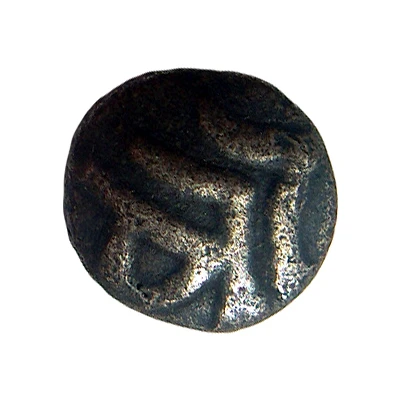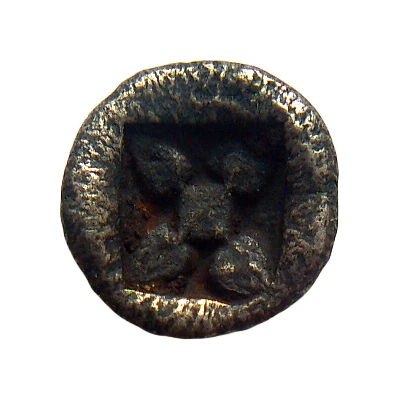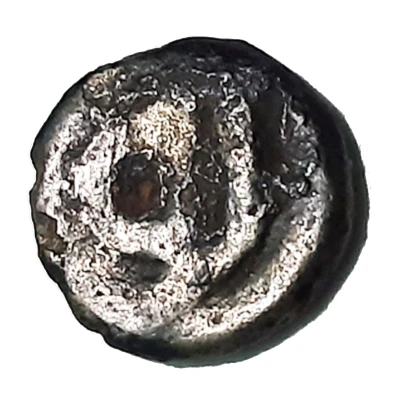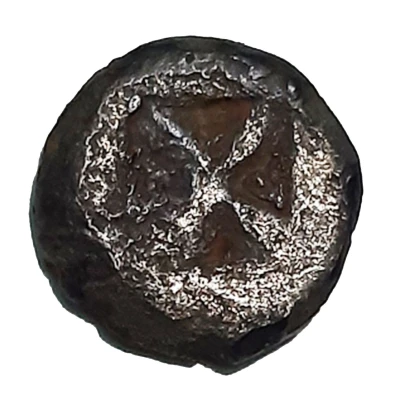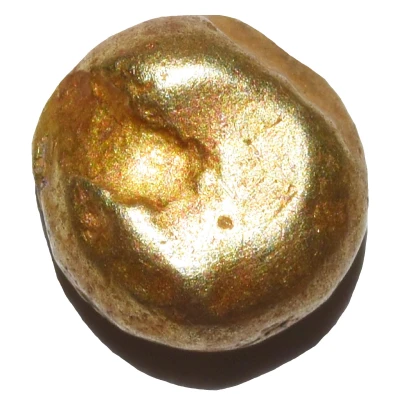
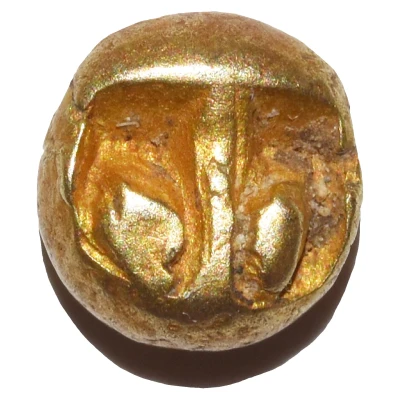

© Fred Cherrygarden
1 Tahil ND
| Gold | 0.55 g | 5 mm |
| Issuer | Pre-Islamic kingdoms (Indonesia) |
|---|---|
| Type | Standard circulation coin |
| Years | 800-1300 |
| Value | 1 Tahil |
| Composition | Gold |
| Weight | 0.55 g |
| Diameter | 5 mm |
| Thickness | 3 mm |
| Shape | Irregular |
| Demonetized | Yes |
| Updated | 2024-10-05 |
| Numista | N#289732 |
|---|---|
| Rarity index | 87% |
Reverse
Vertical bar with a small globe on each side of its base, possibly a lingga figure
Edge
Plain
Comment
Gold coinage used in the Malay archipelago between the ninth to thirteenth centuries. Presumably first developed in Java during the Śailendra period before spreading to various locations such as Sumatra and Malay Peninsula. Occasionally referred as piloncito due to similarities with early gold currencies used in the Philippines. Often inaccurately referred as Majapahit coin, even though common use of this coin predates the founding of Majapahit empire in 1293 AD. By the fourteenth century, cash transactions in Majapahit had actually transitioned to Chinese cash coins (Wicks 1986: 44-47, 50-55)Early specimens resemble small, flattened, round-edged dice; later specimens are more spherical. Surviving specimens show quite consistent weight between 2.4-2.5 grams, which would correspond to māṣa unit despite the tahil inscription (Christie 1996: 250-251). These coins was part of a system used in classical Java and Bali with ideal weight and unit reconstructed as follow (Wicks 1986: 45, 59) (Christie 1996: 257-260):
1 kaṭi (608.96 g) = 16 suvarṇa / tahil
1 suvarṇa / tahil (38.06 g) = 16 māṣa
1 māṣa (2.412 g) = 4 kupang
1 kupang (0.603 g)
In Old Javanese inscriptions, these units are invariably abbreviated as ka, su/ta, mā, and ku. The latest inscription that referred to these units is from 1296 AD.
See:
Christie, Jan Wisseman (1996) "Money and Its Uses in the Javanese States of the Ninth to Fifteenth Centuries A.D."
Millies, Henricus Christiaan (1871). Recherches sur les monnaies des indigènes de l'archipel Indien et de la pèninsule Malaie https://archive.org/details/recherchessurles00mill_0 plate I
Wicks, R. S. (1986). "Monetary Developments in Java between the Ninth and Sixteenth Centuries: A Numismatic Perspective" https://doi.org/10.2307/3351187, pp: 42–77.
Interesting fact
One interesting fact about the 1 Tahil ND (800-1300) coin from Pre-Islamic kingdoms (Indonesia) made of Gold weighing 0.55g is that it features a unique blend of Hindu-Buddhist and Islamic influences in its design. The coin's obverse side bears an image of a Hindu deity, while the reverse side features an Islamic inscription in Arabic script, reflecting the cultural and religious diversity of the region during that time period.
